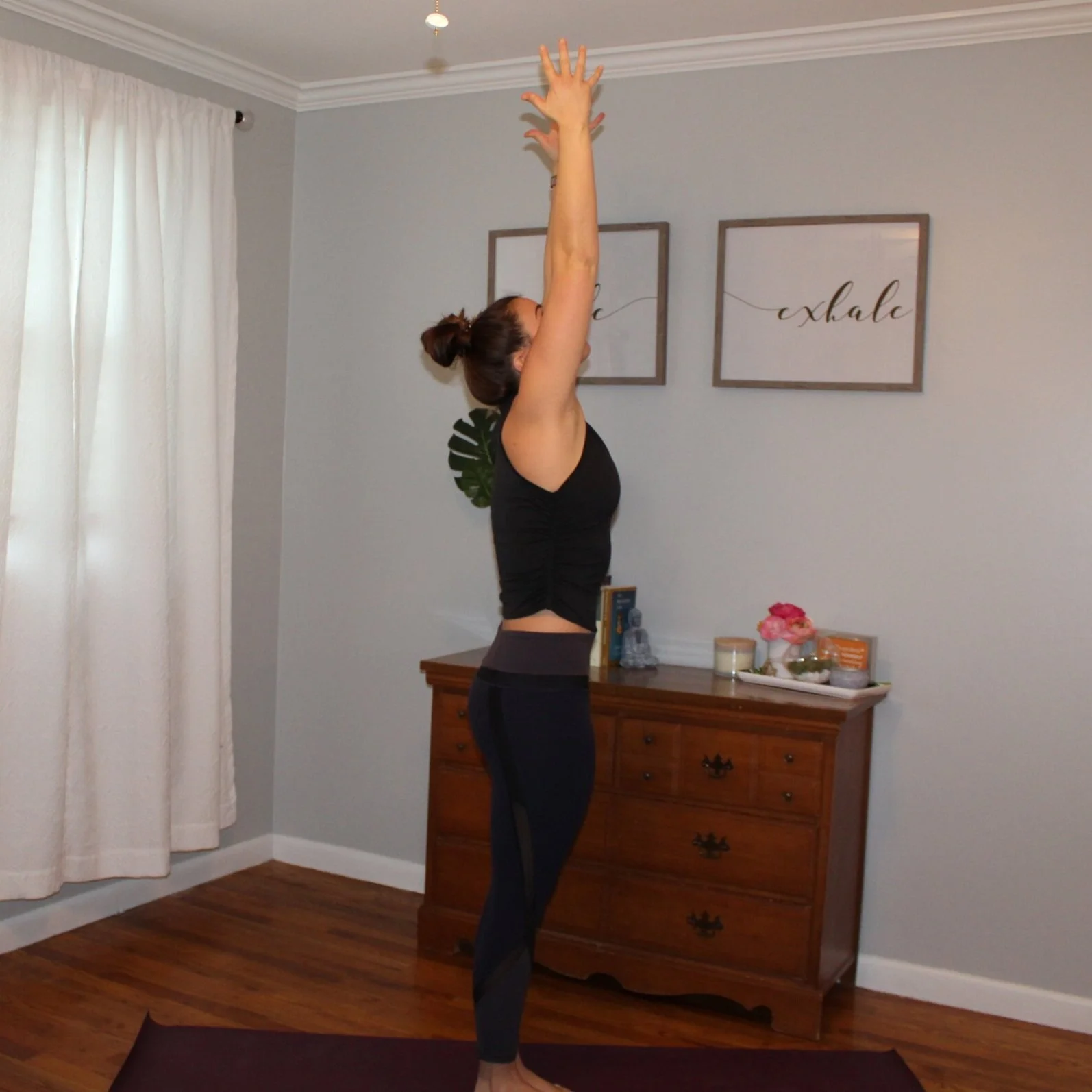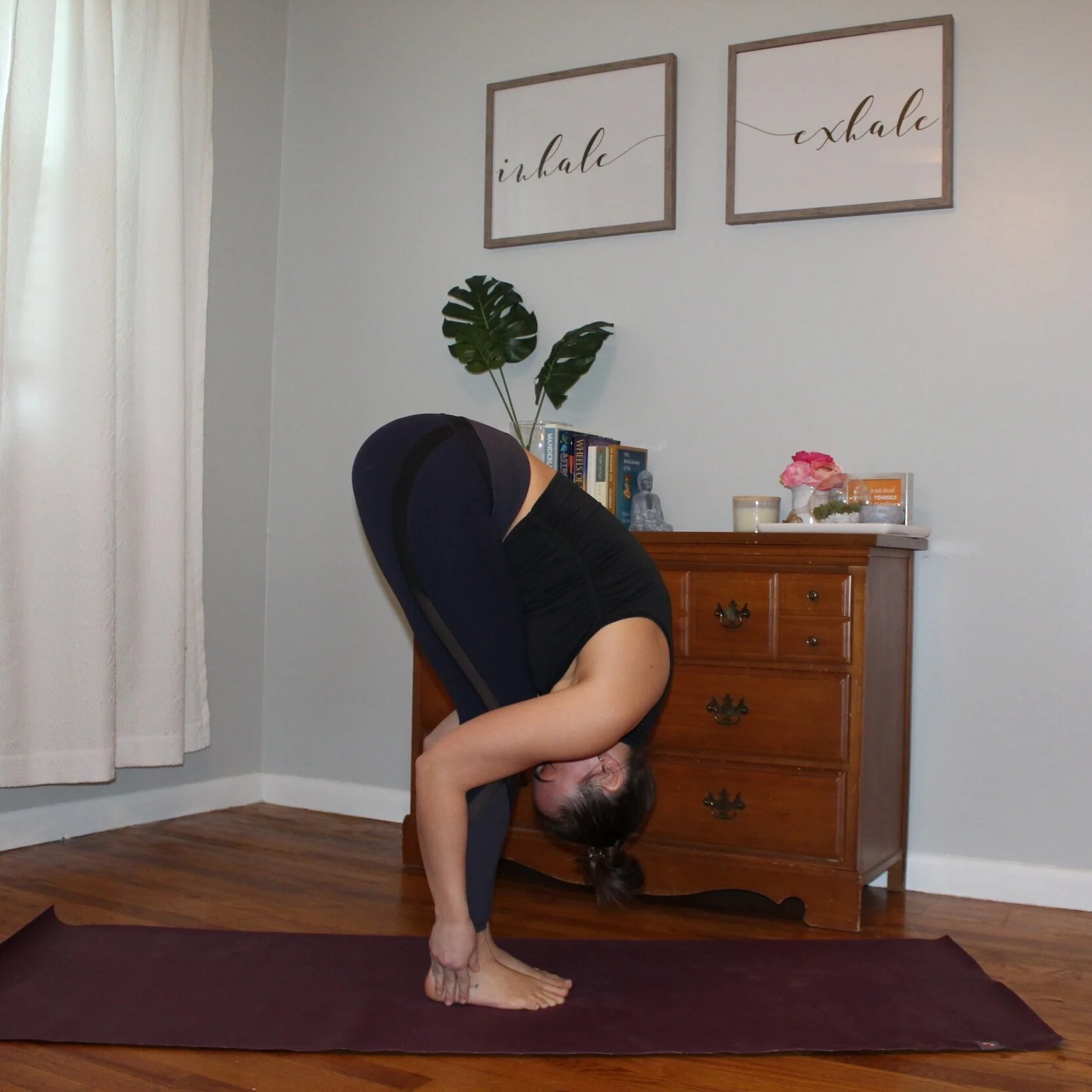How to: Tadasana / Uttanasana / Ardha Uttanassana
In many yoga classes, especially a vinyasa-style class, these three poses are extremely prominent, and you often see them together. They are present all throughout practice with the intention of centering and grounding.
The practice of yoga is thousands of years old and has been passed down mostly through word of mouth and a lot is left open for interpretation. So before I get too far down this rabbit hole, I would like to call out the common misconception about tadasana. Depending on the style of yoga you practice, tadasana can look different. Lines often get crossed between tadasana (mountain pose) and utthita tadasana (extended mountain pose). The posture of extended mountain has also been referred to as urdhva hastasana or talasana. In the Baptiste Yoga practice, tadasana equals extended mountain pose. In other practices, tadasana looks like samastitihi. For the sake of this tutorial, I will be focusing on extended mountain pose.
TADASANA: (TAH-DAHS-ANNA) TADA = MOUNTAIN ASANA = POSE
MOUNTAIN POSE / EXTENDED MOUNTAIN POSE
How to:
Come to stand with your big toes to touch and reach your hands to the sky. Ground down through the four corners of your feet and hug into your centerline. Draw your shoulder blades towards each other and press them into your mid-back. Lift the front of your pelvis toward your belly button and draw the pit of your belly in and up. Extend through your side body. The proper alignment in tadasana is considered your true north alignment, which is present in every pose. For traditional mountain pose, all of the same cues apply, but your hands are out by your side.
You can check the alignment on the pose by placing your back against the wall. In addition, you can begin to challenge yourself here by closing your eyes and or adding a backbend into the pose.
Benefits of the pose:
Improves digestion
Stretches the belly, shoulders and armpits
UTTANASANA: (OOT-TAN-AHS-AHNA) UT=INTENSE TAN=TO STRETCH OR EXTEND ASANA = POSE
STANDING FORWARD BEND
How to:
From tadasana, on an exhale fold forward from your hip joints, not your waist or back. Lengthen the front of your torso as you fold forward. If possible, keep your knees straight but not fully locked out and bring your palms or finger tips to the floor in front of or slightly behind your feet. Press down through your feet and take your sitting bones toward the sky.
**If you have back problems, especially low back problems, bring a significant bend into your knees and don’t fully fold forward. If you have a bulging or herniated disc in our lumbar spine, do not fold past 90 degrees**
Benefits of the pose:
Stretches the hamstrings, calves and hips
Strengthens the thighs and knees
Reduces fatigue, anxiety, stress and mild depression
ARDHA UTTANASANA: (ARE-DAR, OOT-TAN-AHS-AHNA) ARDHA = HALF
HALF WAY LIFT
How to:
On an inhale, lift halfway and lengthen your spine by pressing the top of your head toward the front of the room. You want to find as much length between your pubic bone and navel as possible. Your gaze should be at the front edge of your mat. Draw your shoulder blades together and press them into your body. On an exhale, fold forward into uttanasana.
Benefits of the pose:
Stretches the front of the torso
Lengths and strengthens the back and improves posture
Stimulates the belly



